Throughout the growing season, growers take care of the health of the plants. Preventive and therapeutic treatments of vineyards from diseases and pests make it possible to get a good harvest for home use and for sale. For this, drugs of chemical and biological origin are used.
Content
Treatment of grapes from diseases and pests
Diseases and pests of grapes not only affect its yield and the suitability of grapes for consumption and processing, but can also destroy the entire plant. Therefore, it is necessary to spray vineyards with drugs that protect against diseases (fungicides) and pests (insecticides) several times. Thorough processing of grape bushes in autumn is especially necessary to prepare plants for winter. In order to prevent autumn outbreaks of mildew, scab and powdery mildew, ready-made chemical preparations for these diseases are used. In solutions for this treatment, you can add a means for feeding grapes with potassium, which increases its frost resistance.
Before sheltering the bushes for the winter, it is advisable to carry out treatment with copper sulfate, slaked lime or Bordeaux mixture. It is often advised to process grapes with iron sulfate during this period, but it weakens the winter hardiness of plants.... Therefore, it must be used with extreme caution.
Treatment calendar
If once the grape was considered an exclusively southern plant, now, thanks to the work of breeders, it is grown from Crimea to Siberia. Therefore, it is possible to draw up a calendar of vineyard treatments only by relying on the headlights of plant development, and not on specific dates.
| Drugs | Plant development phases | |||||||
| Disclosure * bushes | Dissolving kidney | Formation | Bloom** | Ovary | Maturation** | After harvest | ||
| leaves | inflorescences | |||||||
| fungicides | from fungal diseases and rot | Modern grape varieties need 4 sprays for diseases per season. | All processing is stopped two weeks before harvest. | If insects or diseases are seen on the bushes. | ||||
| insecticides | from overwintered pests | Combine with spraying for diseases and foliar dressing. | ||||||
* The first phase of grape development in early spring with different forms of its cultivation is called: in covering viticulture - the opening of the bushes, and in non-covering - until the buds swell.
** During flowering and ripening of berries, vineyards are treated only with biofungicides in case of massive disease damage due to weather conditions. Insecticides are not used during the flowering period, because this plant is pollinated by insects.The use of any chemicals during the ripening of grapes negatively affects the quality of the fruit.
When to process grapes
The number of necessary treatments for grapes may be more or less than the recommended ones. The need for them depends on weather conditions and the degree of damage to plants by diseases and pests.
- The first treatment of grapes is the prevention of mildew and oidium. It is done when opening a bush. Many experienced growers recommend making this treatment very gentle - halving the recommended drug concentration in the instructions. In the tank mixture, preparations for ticks and nitrogen-containing preparations can be added for foliar feeding.
- When the inflorescence has already formed, but the buds are still closed, they are treated with a solution that contains sulfur, insecticide and boron.
- The third time the grapes are sprayed at an early stage of development of the ovary, when the berries become the size of a pea. This time they use agents that protect against powdery mildew and mildew, against leafworm and with the addition of nitrogen.
- At an early stage of ripening, the fourth treatment is carried out. The tank mixture is prepared from preparations for mildew, oidium and insects. Potassium salts are added for foliar feeding.
After the harvest is harvested, many gardeners carry out another spraying with combined remedies for diseases and pests. This treatment is carried out only if extensive damage to the grapes by pests or diseases occurs.
In the instructions for preparations for treating plants from pests and diseases, their dosage is indicated, and what area can be treated with this solution. The calculation of the required volume of solution is made based on the area of a particular vineyard.
Fight against grape diseases
Fungal diseases affect grapes in all regions, regardless of climatic conditions. The list of these diseases is quite extensive, but most often gardeners have to deal with powdery mildew (powdery mildew), mildew (downy mildew), scab and insects. Each grape treatment is complex - the tank mixture contains both fungicides and insecticides.
First vineyard treatments
Oidium - in the first stages of development, it is manifested by the "curliness" of young leaves. Later, a grayish bloom appears on the leaves, tops of shoots and berries. The disease develops in damp, warm weather in poorly ventilated, heavily leafy vineyards. The most effective prevention of oidium is the correct formation of the bush, the timely removal of stepsons, twins and extra leaves. Diseased plants are treated with preparations containing sulfur. Sulfur is processed by plants into hydrogen sulfide, which poisons the pathogen of powdery mildew, only when the air temperature is above 18 ° C. To combat powdery mildew, there are preparations that do not contain sulfur, but they are used only after the flowering of grapes, when the shoots and leaves become coarse.
Mildew - lighter, oily spots appear on the leaves. White bloom appears on the underside of the sheet. Later, the disease spreads to shoots and berries. Over time, the affected parts of the plant darken and die off. Preventive action against this disease will be the correct formation of the bush, wide aisles, the destruction of weeds and the harvesting of fallen leaves in the fall. Plants affected by mildew are treated with preparations containing copper or organic fungicides. The causative agent of the disease overwinters on fallen leaves, therefore spraying after harvest is considered the most effective way of protection. To get an environmentally friendly harvest of berries, grapes after flowering are treated with organic fungicides, and not with chemicals.
External manifestations of scab - dark green spots appear on the leaves, which then darken and become almost black. The disease affects young shoots and fruit ovary. Scab development begins in wet weather, at temperatures from 6 ° C. Spores of this fungus overwinter on fallen leaves. Prevention of this disease is the same as for other fungal diseases - the formation of a bush, wide, clean aisles and cleaning of fallen leaves. Colloidal sulfur is used to combat this disease. Treatments for fungal diseases are produced by combined solutions containing sulfur and copper or sulfur and an organic fungicide.
Why disinfect planting material
When buying seedlings or stems (cuttings) of grapes, you need to take care of the health of the future vineyard. The seller himself may not know what pests or diseases have settled on his product. In the early stages of development of grapes, and even more so on shanks, external manifestations of infection cannot be noticed. Therefore, all acquired planting material must be disinfected before planting or storage.
For this, fumigation (fumigation) of seedlings is carried out, but it is used on large volumes of seedlings. At home, they use pesticides (chemicals to combat pests and diseases of plants) or household preparations of antiseptic and disinfecting action.
Chubuki are soaked for one or two days in cool water. Then they are kept in a plastic bag for three to four days to awaken the pests. After that, the cuttings are dipped in a pesticide solution containing phosphorus for a few seconds. And again they are kept in a bag for 24 hours. Now the shanks can be planted immediately or stored until spring. Before planting, it is very useful to treat the cuttings with a 10% solution of ferrous sulfate.
In the laboratories of scientific institutions, ethyl alcohol, preparations containing chlorine, mercury and sulfuric acid are used to sterilize woody and green cuttings. It is impossible to use such substances without special knowledge, but it is quite possible to replace them with household chemicals. To do this, use 70% ethyl alcohol, 10% bleach solution (simply "Whiteness") and hydrogen peroxide. Chubuki are kept in ethyl alcohol for 1–5 minutes, or 10–30 minutes in bleach or 5 minutes in hydrogen peroxide. After that, the cuttings are thoroughly washed in running water.... Sections on the planting material are updated. Disinfected shafts can be planted.
Such aggressive methods of sterilization cannot be used for seedlings - planting material with a root system. The roots may die. If the seedling is still without swollen buds and leaves, then it can be dipped in a clay mash with the addition of pesticides. If a plant is purchased in a container for planting, then it is taken out of the container, the roots are washed with water and completely immersed in a solution of some kind of insecticide containing phosphorus for a few seconds. Then the day is kept in a tightly closed plastic bag. The seedling is ready for planting.
All these operations cannot be done on the site where the grapes are supposed to be grown. Because pests and pathogens can be brought into the ground:
- with soil from a container;
- the container in which the planting material was processed;
- on clothes.
Preparations for the treatment of grapes from diseases
Fungicides that are sprayed on vineyards are divided into 5 groups:
- systemic - are absorbed into the plant;
- contact - form a film on the surface of leaves and shoots;
- combined - form a film and are absorbed;
- deuteromycetes - biofungicides based on fungi;
- dithiocarbams are bacteria-based biofungicides.
Systemic fungicides
| Name | Grape development phase | Acts against | Features: |
| Topaz | The entire growing season, except for the ripening of berries. | oidium | absorbed in 30 minutes; can be mixed with other preparations. |
| Strobe | The last spraying is carried out no later than a month before harvest. |
| the product is safe for bees and other beneficial insects; you can process plants during flowering. |
| Quadris | The last spraying is carried out no later than 14 days before harvest. |
| compatible with most chemical and biological fungicides. |
| Horus | before bud break and again after a week - 10 days. |
| effective in ultra-low concentrations. |
Systemic fungicides
- Fungicide Topaz is absorbed in 30 minutes
- Fungicide Strobi can be used to treat plants during flowering
- Horus fungicide is effective at ultra low concentrations
- Fungicide Quadris is compatible with most chemical and biological fungicides
Metronidazole (in pharmacies - Trichopol) is a folk remedy for combating fungal and bacterial plant diseases. But there are no detailed recommendations for use on grapes.
The main action of Trichopolum (the active substance is metronidazole) is antiprotozoal, that is, it actively affects some types of protozoa. In addition, trichopolum inhibits the vital activity of some pathogenic bacteria. Bacteria developing without air access are sensitive to trichopolum.
Contact fungicides
| Name | Grape development phase | Acts against | Features: |
| Cuprolux | before flowering | mildew | slightly dangerous for bees and other beneficial insects. |
| Hom | before flowering |
| compatible with organic pesticides that belong to the group of dithiocarbamates |
| Colloidal sulfur | before flowering |
| compatible with most chemical and biological fungicides. |
| Bordeaux liquid | before flowering; last treatment 2-4 weeks before harvest. |
| summer treatments require a less concentrated working solution than spring treatments. |
| Abiga Peak | before flowering |
| highly effective even in adverse weather conditions. |
It is undesirable to mix Bordeaux liquid with pesticides.
Contact fungicides
- Hom fungicide is compatible with organic pesticides
- Fungicide Abiga-Peak is highly effective even in adverse weather conditions
- Fungicide Bordeaux liquid last treatment is done 2-4 weeks before harvest
- Fungicide Sulfur colloidal compatible with most chemical and biological fungicides
- Fungicide Cuprolux is low-hazard for bees and other beneficial insects
Combined fungicides
| Name | Grape development phase | Acts against | Features: |
| Nitrafen |
|
| against wintering stages of pests and diseases. |
| Sodium polysulfide | before flowering |
| affects the distribution of moisture in plants. |
| Delan | before flowering | mildew | highly effective in rain conditions. |
| Cuproxat | before flowering |
| the protective effect of the drug lasts for 2-3 weeks. |
| Penncoceb | before flowering |
| favorably affects the activity of photosynthesis |
Do not mix sodium polysulfide, Topsin-M and Fundazol 50 with copper-containing preparations.
Combined fungicides
- Fungicide Sodium polysulfide affects the distribution of moisture in plants
- Delan fungicide is highly effective in rain conditions
- Fungicide Kuproksat - the protective effect from the effects of the drug lasts for 2-3 weeks
- Fungicide Nitrafen against wintering stages of pests and diseases
- Fungicide Penncoceb has a beneficial effect on the activity of photosynthesis
Biofungicides
| Name | Grape development phase | Acts against | Features: |
| Mikosan-V on mushroom-based | the entire growing season |
| improves plant resistance to extreme climatic conditions. |
| Trichodermin mushroom-based | the entire growing season |
| it is worth spraying every two to three weeks to prevent pathologies and to enhance growth. |
| Pentafag-C bacteria-based | the entire growing season |
| can be combined with root and foliar dressings, other biological products and trace elements. |
| Planriz bacteria-based | the entire growing season |
| contains live microorganisms |
It is undesirable to combine biological products with insecticides.
Biofungicides
- Boifungicide Mikosan-V improves plant resistance to extreme climatic conditions
- Boifungicide Pentafag-S can be combined with foliar dressing, other biological products and trace elements
- Boifungicide Planriz contains live microorganisms
- Boifungicide Trichodermin should be sprayed every two to three weeks to prevent pathologies and to enhance growth
Disease Protection - Fungicides
Preparations for the treatment of grapes from insects
If pests appear on the grapes, then the yield can sharply decrease, and in some cases even bushes may die. There are many insects that harm vineyards, but most often you have to deal with ticks and leafworms. Recently, phylloxera has become increasingly common in vineyards. If ticks and leafworms can be seen on other garden plants, then phylloxera is found only on grapes. This pest comes in two forms: root and leaf. Due to damage to the leaves, the growth of the bush slows down and the yield decreases. After phylloxera damage to the root, growths and nodules appear on them. The roots crack and rot. Due to damage to the root system, the bush dies.
Pest treatments are carried out throughout the season:
- to swelling of the buds - from weevils and speckles;
- when leaves appear - from ticks;
- during the separation of buds - from leafworms;
- after flowering - from leafworms and ticks;
- after harvesting - if necessary;
- after leaf fall - from wintering insects.
This list indicates in which phase of plant development it is better to carry out treatment from certain pests, if such a need arises.
Preparations for the treatment of grapes from insects
| Name | Grape development phase | Acts against | Features: |
| Fastak | last treatment 30 days before harvest |
| increased effectiveness against most harmful insects |
| Mitak | last treatment 30 days before harvest |
| Do not mix with copper preparations |
| Actellic | last treatment 30 days before harvest |
| penetrates into leaf tissue and causes the death of mining pests |
| Talstar | last treatment 30 days before harvest |
| Work on processed grapes can be carried out in 10 days. |
| Neoron | can also be used in the flowering phase | ticks | has the highest efficiency among acaricides in the fight against gall-forming mites. |
Protecting vineyards from diseases and pests seems to be a very time consuming task. And you only need 4-5 treatments per season to get a healthy and tasty harvest. The use of biological products makes it possible to protect grapes during flowering and ripening of berries on it.

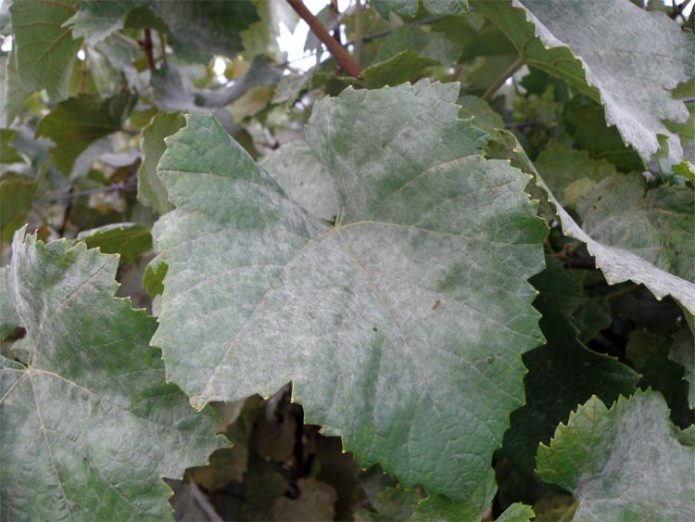
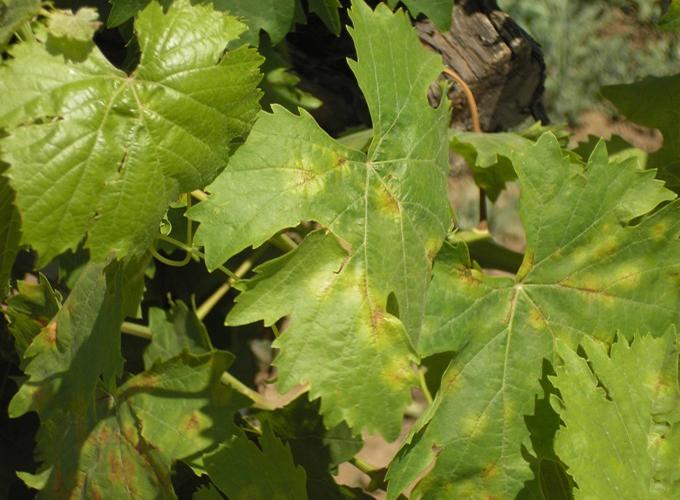
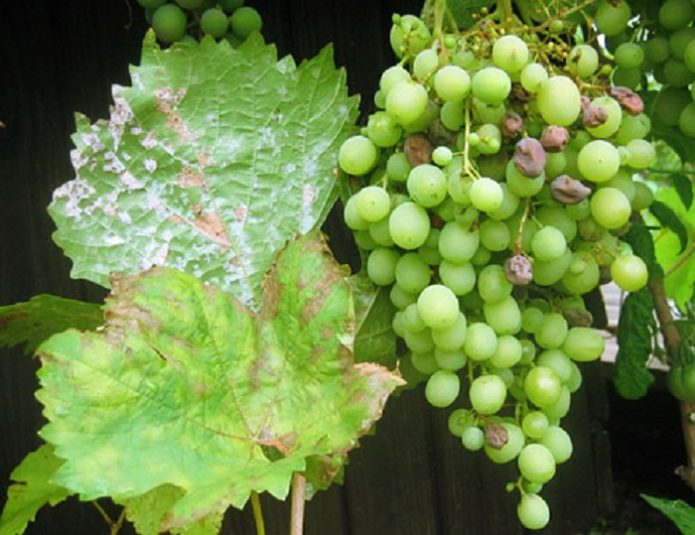
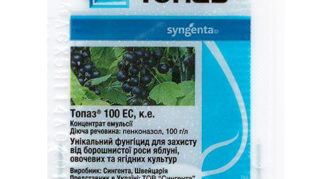
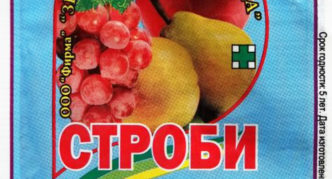

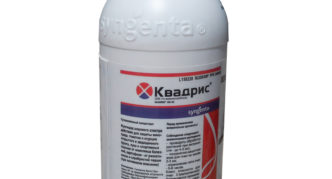
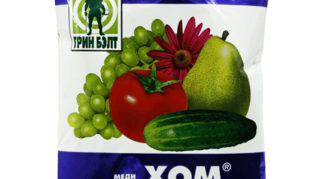
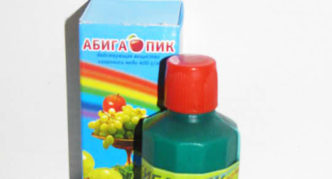
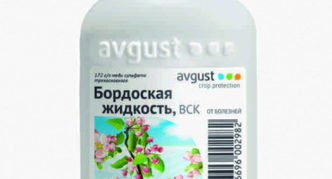
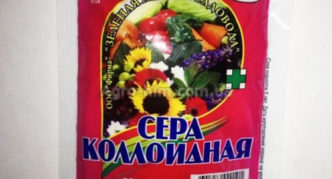

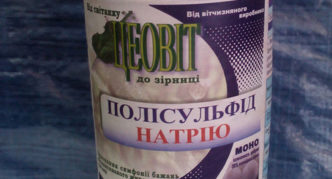
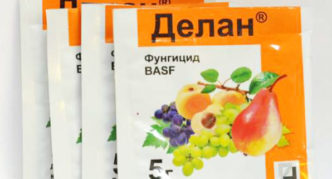
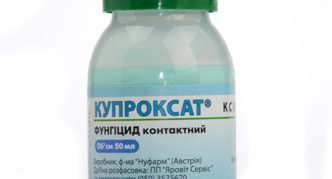
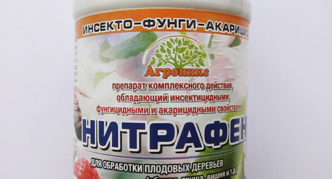
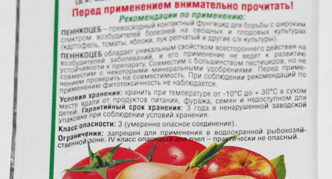
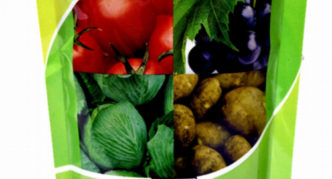
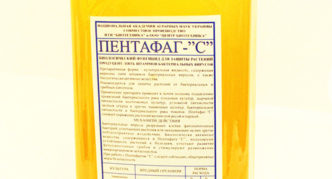
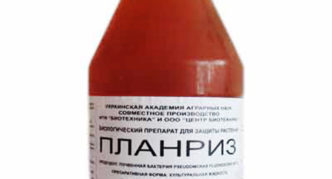
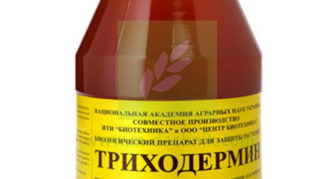



1 comment